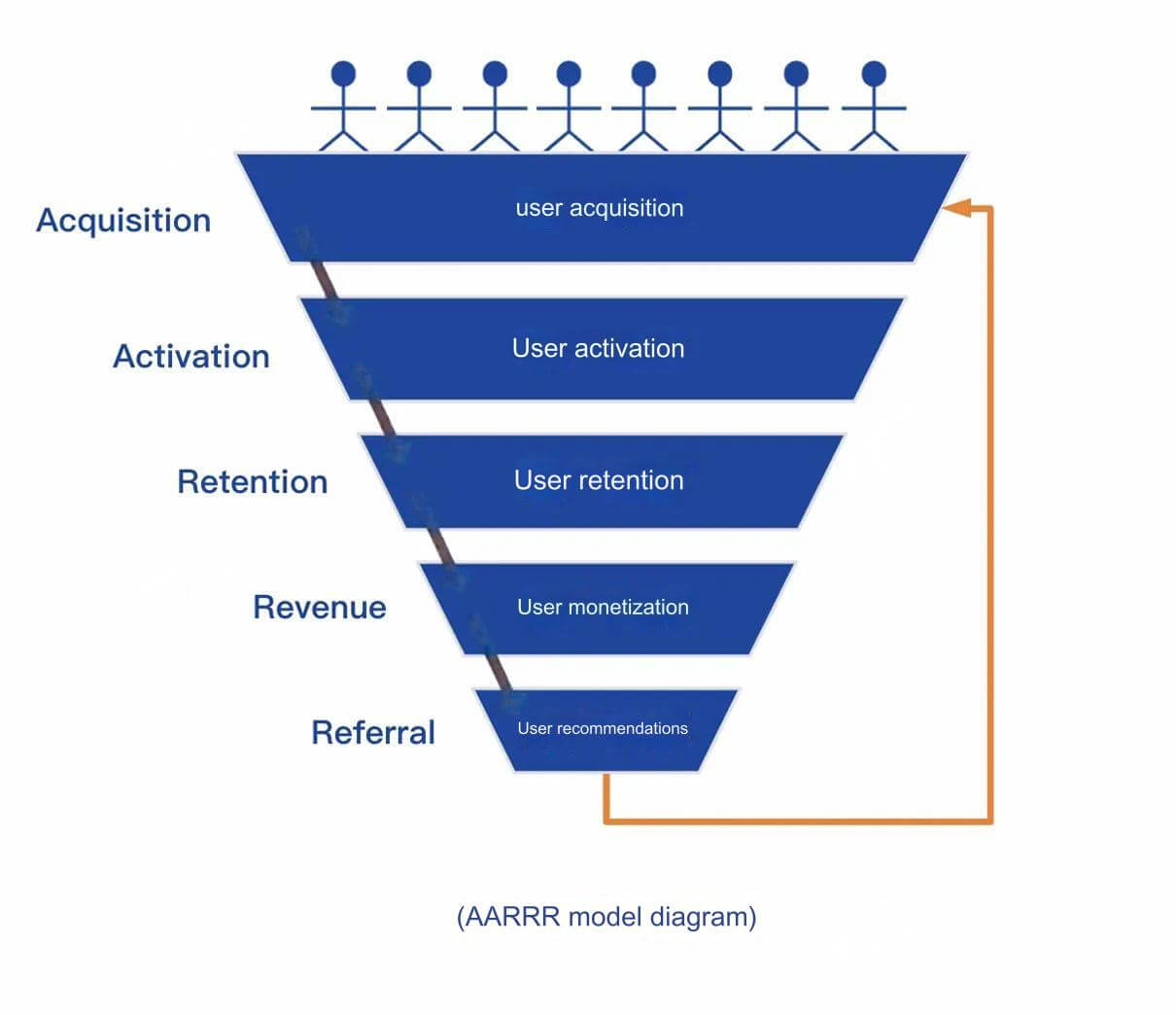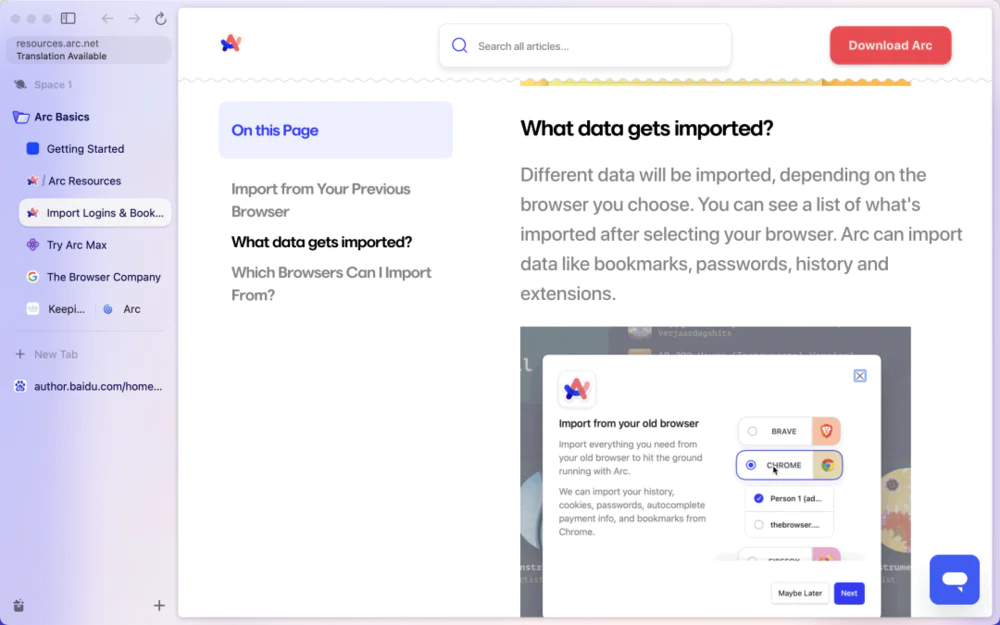"User Experience Elements" has always been one of the essential readings for product managers, offering a classification of five levels of user experience that are widely applied in the workplace. In this article, the author has compiled their thoughts on these elements of user experience. Let's see if these insights align with your own understanding.

1. Interface Layout: The Beauty of Clarity and Logic
The interface layout of an internet product directly affects the user's experience. A good interface layout should enable the user to find the required functions and information as quickly as possible, improving the efficiency of their actions.
For instance, OPPO phones have set a great example in intelligent information services through their SMS feature. By using a card-based content display, essential information is presented directly in the user's primary visual field, allowing them to effortlessly find key data. Furthermore, the design allows for one-step actions, such as directly querying express delivery information or recharging phone balances, based on the card-style display, making the whole process more seamless and efficient.
In web design, common layout styles include large image banners with simple grids, single-column layouts, custom grid layouts, F-shaped layouts, and minimalist page layouts. These styles have distinct features that cater to different types of websites. For example, large image banners with simple grids are clean and visually striking, employing responsive design for easy browsing on different devices. A single-column layout is suitable for simple blog sites or small project showcases, reinforcing the form and weight of content.
Additionally, proximity principles can be followed in the interface layout, where related elements are spaced more closely, while unrelated ones are spaced farther apart. Likewise, elements of the same type should have even spacing, facilitating user understanding of logical relationships within the interface. To avoid clutter caused by excessive information, methods such as grouping related elements in a module, using dividers, or adjusting text size can help create a sense of visual order. In summary, clear and logical interface layouts contribute significantly to a better user experience.
2. Visual Design: The Charm of Colors and Icons
Color Matching
Color matching is critical in app design. Each color evokes a different visual experience for the user, and appropriate color matching must consider both aesthetics and color contrast to ensure readability.
Different types of apps should adopt color schemes that align with their characteristics. For instance, social apps might use warm, vibrant colors to create a relaxed atmosphere, with reds, oranges, and other warm hues fostering interaction and energy. In contrast, office apps often use simple, cool tones like blue and gray, which help users stay focused and efficient while working.
In mobile UI design, primary colors, standard colors, and accent colors are usually chosen. The primary color sets the overall style, though it is not used extensively, typically appearing in navigation bars, buttons, and icons, providing a sense of coherence and brand identity (e.g., NetEase Red, Tencent Blue). Standard colors define the color rules for text, lines, icons, and backgrounds. Accent colors are used for headings, buttons, and icons, emphasizing key content and guiding users' attention.
Common color matching design methods in mobile UI include adjacent color matching, monochromatic color schemes, accent color matching, neutral color schemes, and gradient vs. solid color matching.
The adjacent color matching rule selects colors that are close to each other on the color wheel.
The monochromatic color scheme uses different shades of a single hue for a unified user experience.
The accent color method uses a subdued main color paired with a vibrant accent color to highlight specific features.
The neutral color rule uses neutral colors such as black, white, and various shades of gray to minimize distractions.
Gradient and solid color matching is an increasingly bold trend in mobile app design.
When designing color schemes, avoid overly harsh or indistinguishable combinations. Significant contrasts in saturation, brightness, or hue can create strong visual hierarchy, but eye-straining combinations can be balanced by adjusting the areas of opposing colors, modifying their saturation and brightness, or introducing neutral tones like black, white, or gray.
Icon Design
Icons play a crucial role in app design. They must be simple, clear, and easy to understand, aligning with users' cognitive habits. For example, a trash can icon represents deletion, and a magnifying glass icon represents search, which users can instantly recognize without additional learning.
App icons need to be both functional and distinctive. The design should reflect the general characteristics of the application while highlighting its unique features. Icons must clearly convey information to help users understand functionality, which is the most critical aspect of icon design. Icons should be designed with consideration for the current context and interface. In some cases, icons may also need to be paired with text to provide additional clarity.
Each color in an icon represents different emotional undertones, so color usage in icons should be approached carefully. Colors assist with conveying meaning and help users remember the icon's function. Understanding the universal meanings associated with colors, as well as users' color preferences and aesthetic psychology, is essential for effective design.
The symbolic function of icons means they can replace text. Recognizable, clear icons greatly enhance the usability of interface navigation. Icons are typically small-sized images used to convey visual information, often accompanied by text to support and enhance the conveyed meaning. A well-designed icon should help users quickly understand the app's attributes and functionality.
When designing an icon, elements related to the product should be considered to accurately convey its characteristics. Icon design should also focus on aesthetics, as visually appealing icons increase the likelihood of user interaction, effectively conveying their intended meaning. However, the primary goal of any product is to serve its functional purpose, so visual appeal must support functionality. Designers should refine icon details to encourage users to engage with the product.
Icons should maintain clarity across different devices and screen resolutions. Apple's developers optimize icons for iPhones, considering specific requirements and screen proportions to ensure high clarity. However, Android developers face the challenge of optimizing icons for a variety of devices with different screen resolutions, which can sometimes result in lower clarity. To solve this, Apple employs anti-aliasing techniques in iOS to reduce jagged edges, whereas Android doesn't have default anti-aliasing, which can cause pixelated icons on some devices.
To address these challenges, it's essential to maintain consistency in icon design across the industry and ensure the integrity of app icon design, carrying out preliminary research and maintaining continuity when upgrading app icons.
3. Performance Optimization: The Need for Smoothness and Speed
Smooth Operation
In today's digital age, users interact with various products on different devices, requiring products to function smoothly across diverse devices and network conditions. Responsive design has become one of the key technologies to address this issue. Responsive design automatically adjusts layouts and content based on the screen size, ensuring that users have a positive experience on desktops, laptops, tablets, and smartphones.
For example, video streaming platforms exemplify the importance of responsive design. When streaming on a phone, the platform should automatically adapt to the screen size, providing a suitable interface and control buttons. This ensures a smooth viewing experience, regardless of whether users are on large-screen tablets or small-screen phones.
Similarly, online office software uses responsive design to enable efficient work across various devices. The document editing interface adjusts automatically based on screen size, allowing users to comfortably view and edit documents on small screens, improving productivity.
Loading Speed
Fast loading times are crucial for the success of a product. In an age of rapid information exchange, users' patience is limited, and long loading times may drive them to abandon the product. To reduce waiting times, various optimizations can be made.
Code optimization is one essential method for improving loading speed. By simplifying and optimizing code, removing unnecessary elements, and improving execution efficiency, loading times can be reduced. For instance, in optimizing C++ program loading, separating code and data into different sections allows the loader to load them in parallel, reducing overall wait times.
Image compression is another effective technique for reducing loading times. Images are often the main contributors to slow page loads, but tools like TinyPNG or JPEGmini can compress image file sizes, speeding up page load times. Additionally, selecting appropriate image formats based on the type of image (e.g., PNG for transparent backgrounds, JPEG for photographs) can further optimize load speeds.
Progressive image loading is a technique used to optimize web page performance by displaying images in stages, enhancing users' perception of speed. This method gradually increases image clarity, displaying a blurred version initially and improving it as more data loads.
In Unity game development, progressive loading techniques are also used, dividing resources into smaller chunks for frame-by-frame loading. This reduces load times, lowers memory usage, and enhances game performance, ensuring seamless transitions between scenes or levels and improving the overall user experience on various devices.
4. Content Presentation: The Importance of Accuracy and Relevance
1. Accuracy
In today's age of information overload, ensuring the accuracy of content is crucial. Whether it's search engine results or the course content on knowledge-sharing platforms, strict control over the quality of information is a must. For example, in the health field, if users search for medical information and receive inaccurate or misleading results, it could severely impact their health.
To improve the accuracy of content, referencing authoritative institutions and experts' findings is essential. For instance, in health-related content, information from the World Health Organization (WHO) is a trusted source, while financial content can be cross-referenced with reports from the International Monetary Fund (IMF). Citing expert opinions, such as those from well-known scientists in technology or historians in the field of cultural history, also enhances credibility.
Academic research and literature are vital references for ensuring content accuracy. Utilizing academic databases like CNKI (China National Knowledge Infrastructure) and Wanfang in China, or international ones like Web of Science and IEEE Xplore, provides access to peer-reviewed papers. These papers offer highly accurate data and conclusions that can serve as a reliable foundation for various fields.
Additionally, fact-checking is necessary. Important information should not rely on a single source; multiple sources must be cross-verified. For example, when reporting on international events, it's critical to aggregate information from several reputable media outlets and official statements; in business news, compare reports from different financial media and corporate filings. Data should be cross-checked from multiple channels, such as government statistics, research institutions, and industry associations. Furthermore, logical consistency must be maintained to avoid flaws in reasoning.
An internal review mechanism is also essential for ensuring content accuracy. Internal review teams or processes can verify content's accuracy, objectivity, and originality. For highly specialized content, external experts can be consulted for proofreading or advice. For example, when publishing new medical treatments on a health website, consulting medical professionals for approval ensures the information is accurate and safe.
Lastly, transparency and traceability are crucial. Content sources, whether data, opinions, or images, should be clearly labeled with precise citations, allowing readers to verify their reliability. For content that frequently updates, like legal interpretations or industry news, maintaining update records and historical versions helps readers track changes and understand the developmental process.
2. Relevance
Providing content highly relevant to users' needs and interests is key to enhancing the user experience. Recommendation systems play a significant role in this.
Various methods can be used to achieve relevant recommendations. One approach is behavior-based recommendation, such as collaborative filtering. This method analyzes users' past behaviors (such as clicks, purchases, etc.) to identify other users with similar patterns, then suggests content they might be interested in. Item-to-item recommendation is another method, where items similar to those the user has interacted with are recommended based on their interaction history.
Content-based recommendation is also common, where the content features (like keywords or topics) of documents are analyzed to find similar content. Using components like Solr's MoreLikeThis, similar documents can be easily identified.
Hybrid recommendation systems combine the strengths of multiple recommendation algorithms. For instance, combining content-based methods with collaborative filtering can yield more accurate recommendations. External machine learning frameworks like TensorFlow and Spark MLlib can also be used to train models and integrate them into the querying process, or Solr's Learning to Rank (LTR) feature can optimize query scoring.
In relevance search, techniques like TF-IDF and BM25 are employed, with Solr using them by default to calculate the relevance between documents and queries. Parameters can be adjusted to optimize scoring functions for better matching to the dataset characteristics. Different fields might have varying impacts on relevance, so query parameter adjustments (e.g., using qf for field weights) can help prioritize important fields.
Stemming and synonym handling can improve the effectiveness of relevance search. By using a stemming filter (e.g., PorterStemFilterFactory) to standardize word forms and employing synonym mapping (e.g., SynonymFilterFactory) to account for different expressions with the same meaning, the search can be made more relevant. Spell checking (SpellCheckComponent) can also help correct users' spelling errors, ensuring that more accurate results are returned. Query expansion can further enhance relevance by dynamically adding terms based on user behavior, context, or other relevant data.
Learning to Rank (LTR) combines machine learning models to optimize search result ranking. This involves collecting user feedback data (such as click-through rates) and training a ranking model, which is then applied to Solr’s query scoring process. It allows adjusting results based on user history and preferences, creating specific profiles for different user groups or adding personalized conditions to queries.
5. User Experience: Readability and Simplicity
1. Readability
When presenting text content, typography, font size, and style play a pivotal role. Proper formatting makes reading easier and reduces visual fatigue. For long articles, paragraphs should be structured logically, each focusing on a specific theme to make the content clearer. Adding subheadings can help readers quickly locate content of interest, improving reading efficiency.
For example, some online reading platforms automatically generate a table of contents based on the structure of an article. Readers can click on a subheading to quickly jump to the corresponding section, significantly improving convenience. Additionally, offering multiple font and size choices enhances readability since different readers have varying preferences for text presentation. Some may prefer larger fonts for easier reading, while others might enjoy more compact text.
Online platforms can also adjust background colors to suit different reading environments and user needs. For example, soft background colors reduce eye strain in dimly lit environments. Proper line spacing and letter spacing are equally important for making text easier to read. Too little line spacing makes the text feel cramped, while excessive letter spacing disrupts the flow of reading.
2. Ease of Use
The simplicity and directness of operational processes are crucial for enhancing the user experience. Reducing the number of steps needed to complete tasks enables users to accomplish their goals faster. A prime example is one-click login, where users can log in through third-party accounts like WeChat or QQ, which is more convenient than the traditional username and password method. Users don't need to remember multiple credentials, and the process is completed with just one click, saving significant time.
Product functionality should be easily discoverable, avoiding deep menus. Intuitive icons and clear text labels can guide users effectively. For instance, important features on an app’s homepage should be prominently displayed, making them immediately visible to users. Complex menu structures should be avoided, and if there are many features, categorizing them can help users find them easily.
Moreover, feedback during interactions is vital. When users perform actions, the system should promptly provide feedback to confirm the success or failure of their actions. For example, after clicking a button, it might change color or blink to indicate it has been pressed, and after completing an action, a message like "Action successful" should be displayed. This feedback reassures users, enhancing their overall satisfaction with the product.
6. Interaction Design: Feedback and Timeliness
In interaction design, providing timely feedback about the results of user actions is crucial for enhancing user experience. Below are some common types of feedback and their application scenarios.
1. Animation Feedback
Animations can capture users' attention and help them better understand the operations and changes in the interface. For instance, when users click the "Add to Cart" button on a shopping website, a simple animation effect can provide feedback that the item has been successfully added to the cart.
On platforms like Taobao, animation design can improve interactivity.
Page loading animations: Adding simple yet engaging animations during the loading process, such as progress bars, rotating icons, or fading effects, can alleviate user anxiety while waiting.
Carousel animations: Using transition effects, gradients, smooth movement, or fade-ins for product images or banner advertisements makes the slideshow more fluid and attractive.
Hover effects: Adding animation effects such as zoom, rotation, or shadow effects when users hover over product images or links increases interaction with the page.
Button animations: Adding animation effects to buttons, such as bounce effects, color changes, or subtle transitions, enhances their clickability.
Dynamic icons: Using animated icons or icon sets, such as spinning icons during loading or a heart icon when liked, attracts users’ attention, conveys specific information, and enhances interaction with the page.
Page scroll effects: Animations during page scrolling, like parallax effects or gradual content reveal, make the page more lively and encourage users to explore the content further.
Dynamic transition effects: Smooth transitions when switching pages or updating content can reduce the abrupt feeling of loading, making page changes feel more natural.
User interaction feedback: Animation effects can provide immediate feedback on user interactions, such as parabolic animations when items are added to the cart, or animated transitions when an order is confirmed, improving user engagement and satisfaction.
2. Sound Feedback
Proper use of sound feedback can add emphasis, but excessive use can become disruptive. Examples include the click sound of a virtual keyboard, the "whoosh" sound when sending an email or message, the "click" sound when shaking a phone in WeChat, or the shutter sound when taking a photo with an app.
Sound feedback should not be the primary form of feedback and should allow users to turn off sound notifications because users may be in noisy environments or prefer not to have sound on.
3. Textual Feedback
Textual prompts should be concise and easy to understand. Avoid inverted sentence structures, and aim to express the message clearly in one or two sentences. Avoid overly technical language; if the page already has detailed instructions, the feedback can be simpler without repeating the same information. For example, if a nickname doesn’t meet the format requirements, simply display "Nickname does not meet the requirements."
Icons should be used appropriately to attract attention and help users identify the type of prompt.
Textual prompts can be delivered in two forms: bubble prompts and pop-up dialogs.
Bubble prompts: These are brief messages that appear briefly on the screen like bubbles and disappear on their own without requiring user interaction. They are usually used to indicate task status, operation results, or guide users to focus on specific locations. However, since they can be easily ignored, they should not carry too much text or important information.
Pop-up dialogs: These usually contain a short explanatory text and two action buttons, used to confirm or cancel important actions. They are often highlighted with distinct colors to draw attention to operations that may result in user loss, such as "Delete" or "Don’t save." Pop-up dialogs force users to focus on the content and actions, blocking all other content in the background, making them the most disruptive form of notification. Therefore, pop-up prompts should be used sparingly; less critical feedback can be conveyed via bubble prompts.
In summary, providing timely feedback through animations, sounds, and text prompts enhances users' perception of their actions, increasing engagement and satisfaction with the product.
7. Navigation Clarity: Clear and Guiding Principles
In product design, clear navigation is crucial. A well-structured navigation menu and paths allow users to quickly understand their current position in the product and how to access other features.
1) Types and Features of Navigation Menus
Horizontal navigation menus: Typically located at the top of the page, these menus display items horizontally. This style is suitable for most websites and follows users' natural top-to-bottom reading habits, making it simple and intuitive to use. For example, news websites often use horizontal menus to categorize different news sections, allowing users to easily find their interests.
Vertical navigation menus: These menus are typically displayed on the sidebar, arranged vertically. They are ideal for websites with numerous menu items, as they save space and provide more navigation options. For example, enterprise management systems often use vertical menus to help users switch between various business modules.
Drop-down menus: A common navigation style, drop-down menus expand to show sub-menu items when the mouse hovers over or clicks a menu item. This style is effective for websites with multi-level menus. For instance, on e-commerce platforms, hovering over "Clothing" will display sub-categories like "Men's Wear," "Women's Wear," or "Children's Wear," with further sub-categories like "Shirts" or "Pants" appearing on further clicks.
Expandable menus: When menus take up a lot of space, expandable menus are used to hide items until needed. These buttons are usually located at the top-left or top-right corners for easy access. For example, design software often hides less frequently used features in expandable menus, which users can open when needed.
2) Principles for Designing Navigation Menus
Simplicity: Navigation menus should avoid excessive menu items and sub-menus to prevent user confusion. Generally, menus should not contain too many items, focusing on key functions. For example, a music app's menu might include "Home," "My Music," "Discover," and "Settings" as the main options for quick access to frequently used features.
Consistency: Navigation menus should remain consistent throughout the product, so users can easily find the features or information they need. Whether switching between pages or devices, the navigation menu’s position, style, and interaction method should remain the same. For instance, WeChat maintains a consistent navigation layout across both mobile and desktop versions, so users do not feel disoriented when switching between devices.
Visibility: Navigation menus should be placed in prominent areas, such as at the top or on the sidebar, so users can immediately spot them upon entering the website. The colors and fonts should contrast well with the background to improve readability. For example, the navigation menu on Baidu’s homepage is placed at the top with white text, contrasting against the dark background, making it easily noticeable.
Usability: The buttons in the navigation menu should be appropriately sized to make clicking easy. Additionally, the menu’s response time should be quick to avoid lagging. For example, responsive websites often adjust the size and layout of navigation buttons based on the user’s device, ensuring ease of use across different devices.
3) Planning Navigation Paths
Clear Path Indicators: Providing clear path indicators, such as breadcrumb navigation or page titles, helps users understand their current location and how to return to previous pages. Breadcrumbs show users their current position and the path leading from the homepage to the current page. For instance, on an e-commerce platform, users can easily find their way back to previous product categories via breadcrumb navigation.
Logical Page Layout: Page layout should complement the navigation menu, guiding users through the content naturally based on the navigation path. For example, an enterprise website may feature its main business and products on the homepage, with navigation leading to detailed pages for each business section.
Easy-to-Understand Link Names: Link names in the navigation menu should be clear and straightforward, using common words and symbols to avoid complexity. For instance, labels like “Contact Us,” “About Us,” and “Product Information” instantly tell users what the links lead to. The link names should match the content on the page to avoid user confusion.
In summary, clear navigation menus and paths are key to improving user experience. By selecting appropriate navigation styles, following design principles, and planning the navigation path carefully, users will find it easier to use the product, boosting their satisfaction and loyalty.
8. Personalization and Customization: A Sense of Uniqueness and Exclusivity
1. Personalized Recommendations
Personalized recommendations play a crucial role in many apps today, providing users with tailored content and services based on their behavior and preferences, significantly enhancing the user experience.
For example, music apps like QQ Music and Xiami Music recommend songs with similar styles based on the user’s music preferences. By analyzing data such as the user’s listening history, favorite playlists, and likes, these apps can precisely grasp the user's musical taste and suggest new songs and albums they may enjoy. According to statistics, QQ Music's personalized recommendation feature increases the chances of discovering new music by over 30%, greatly enriching the user's music library.
News apps are another key area for personalized recommendations. Take Toutiao as an example. It analyzes users’ browsing history and search keywords to recommend news content that matches their interests. Toutiao’s recommendation algorithm can filter through massive amounts of news, delivering content most likely to engage the user, enhancing information retrieval efficiency. Surveys show that users who use Toutiao’s personalized recommendations read 20% more news on average daily compared to those who don’t.
E-commerce platforms also make extensive use of personalized recommendations. Platforms like Taobao and JD.com recommend related products based on user purchase history, browsing records, and search keywords. For instance, if a user recently bought a pair of sneakers, the platform might recommend related sportswear or accessories. This form of personalized recommendation not only improves shopping convenience but also boosts sales. According to data, personalized recommendations can increase product click-through rates by over 25% and conversion rates by more than 15%.
2. Customization Features
Customization features allow users to tailor products to a certain extent, meeting their needs and preferences, which enhances the user experience.
A great example is smart cars. Smart cars can be customized based on users’ personal preferences, from exterior designs to interior configurations and intelligent system features. Users can choose elements like the car’s body color, wheel styles, seat materials, and even customize features in the intelligent system, such as navigation settings and voice assistant wake-up phrases. Statistics show that more than 30% of smart car users choose customization services, and this proportion is increasing.
In office software, users can customize interface layouts and shortcuts. For example, users can place frequently used function buttons in prominent locations or set specific shortcuts for quick operations. This boosts work efficiency and reduces operation time. Surveys show that users who customize their interface layouts and shortcuts increase their work efficiency by over 20% on average.
Desktop wallpaper applications also provide rich customization options. Users can select their favorite images as wallpapers and adjust parameters like brightness, contrast, and saturation to fit different environments and personal preferences. Some apps even offer dynamic wallpapers, making the desktop more lively and engaging. According to statistics, over 50% of users regularly change their desktop wallpaper, with most opting for customized ones.
9. Security and Reliability: The Foundation of Protection and Stability
1. Data Security
In today’s digital age, data security has become a major concern for users. Protecting personal information and ensuring data security is critical, and various encryption technologies and secure login mechanisms are employed to safeguard data transmission and storage.
1) Selecting Appropriate Encryption Algorithms
It’s important to evaluate the security of encryption algorithms, choosing widely verified and recognized ones such as AES (Advanced Encryption Standard) or RSA (asymmetric encryption). These algorithms are well-regarded in the data encryption field and have broad applications. Additionally, the choice of algorithm should depend on the type of data, usage scenarios, and security needs. For example, AES is suitable for fast encryption and decryption of large data, while RSA is more suited for key exchange and digital signatures.
2) Establishing Key Management Mechanisms
Key Generation: Secure methods for generating keys should be used to ensure the keys are random and complex enough to prevent guessing or brute force attacks.
Key Storage: Keys should be stored in secure locations, such as Hardware Security Modules (HSM) or encrypted key management services, with strict physical and logical controls ensuring only authorized access.
Key Distribution: Secure key distribution mechanisms should be in place to prevent interception or tampering during transmission. Encrypted communication protocols and secure key exchange protocols can be used.
Key Update and Revocation: Keys should be regularly updated to counter potential security threats. If a key is no longer needed or is at risk of being compromised, it should be revoked and replaced with a new key.
3) Implementing Encryption Policies
Static Data Encryption: Encrypting static data stored on servers or storage devices prevents unauthorized access through physical intrusion or other means.
Dynamic Data Encryption: Encrypting data during transmission using secure protocols such as SSL/TLS ensures that data cannot be intercepted or altered in transit.
Transparent Encryption: Transparent encryption can be applied to frequently accessed or modified data, allowing encryption and decryption without impacting the user experience, improving both data security and usability.
4) Strengthening Access Control and Authentication
Access Control: Strict access control policies must be implemented to ensure only authorized users can access sensitive data, utilizing methods like Role-Based Access Control (RBAC) or Attribute-Based Access Control (ABAC).
Authentication: Multi-factor authentication (MFA) mechanisms should be used to enhance the authenticity and trustworthiness of user identities. By combining passwords, phone verification codes, and biometric recognition, unauthorized access can be effectively prevented.
5) Regular Audits and Security Monitoring
Regular audits of encryption technologies, key management, and access controls help identify and fix potential security issues. Additionally, real-time monitoring and alert systems can detect and respond to potential security breaches. For example, online banking apps use various authentication methods like passwords, SMS verification, and fingerprint recognition to prevent account theft. Sensitive information (e.g., ID numbers, bank card details) is encrypted during transmission and storage to ensure security.
2. Service Stability
Ensuring stable operation of services and minimizing downtime is key to enhancing the user experience. This requires a well-established server architecture and backup plans to handle high traffic and unforeseen circumstances.
1) Establishing a Robust Server Architecture
Choosing Appropriate Server Hardware: Based on the product’s needs and user scale, the right hardware should be chosen, ensuring sufficient performance and storage capacity.
Backup Planning: Backup should be scheduled outside peak times to prevent server overload during high-traffic periods. Regular checks are needed to ensure backups are completed on time.
Email Server Monitoring: Monitoring email server performance, including spam and email queues, helps prevent server overloads.
Server Configuration Adjustment: Services like MySQL and php-fpm should be configured based on usage, optimizing server settings such as max children and max requests.
2) Handling High Traffic and Unforeseen Situations
Monitoring and Analysis: Website monitoring tools should be used to track traffic patterns, server load, response times, and error rates. Any unexpected increase in traffic should be analyzed for its cause, whether it’s due to promotional activities, events, or cyberattacks.
Emergency Measures: Temporary measures like increasing bandwidth, load balancing, caching static content, and using CDNs can help handle high traffic. Non-essential services can be temporarily shut down to ensure the core service runs smoothly.
Long-term Measures: Server expansion, upgrading hardware, or adding more server nodes can increase capacity. Cloud services can be utilized for elasticity, automatically expanding resources as needed.
For instance, large social platforms or e-commerce websites must have a sound server infrastructure and backup plan. During high-traffic periods, load balancing and CDNs ensure stable service. Additionally, security mechanisms like firewalls and DDoS protection are critical to ensure the uninterrupted experience of users.
In conclusion, security and reliability are key to a product's success. By implementing effective data security measures and ensuring service stability, user trust and satisfaction can be enhanced, providing a solid foundation for the product's long-term development.







